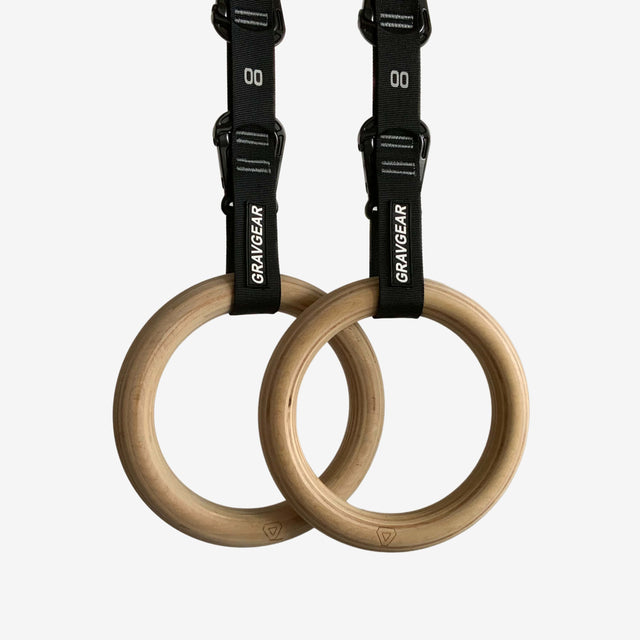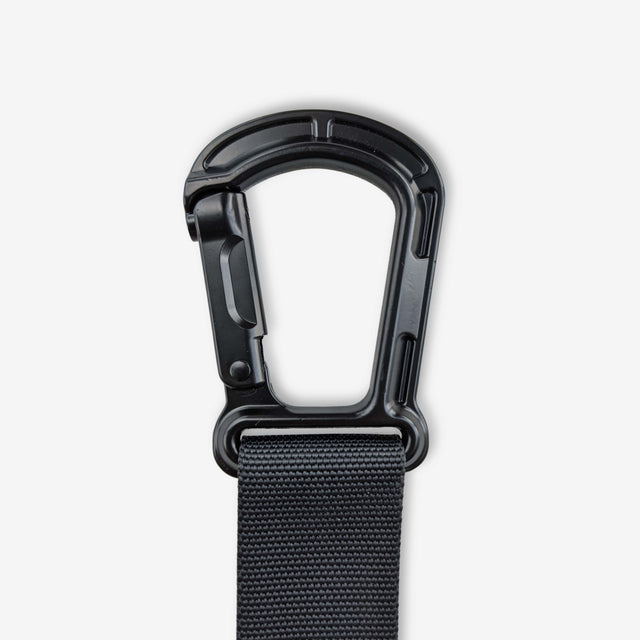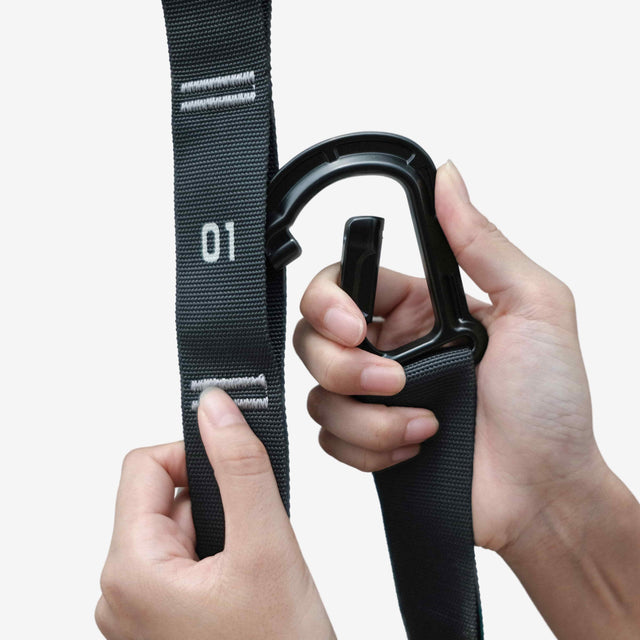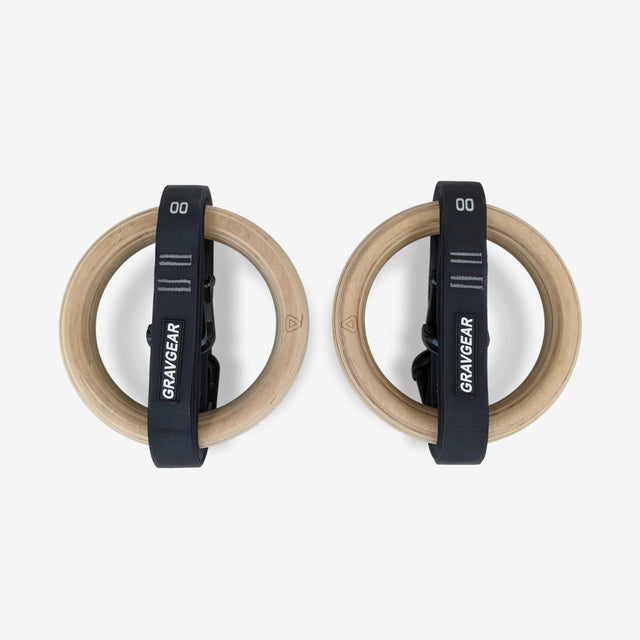28mm vs 32mm Gymnastic Rings Diameter DEBUNKED
Choosing between 28mm or 32mm gymnastic rings depends on hand size and training. The standard gymnastic ring width is 28mm, ideal for technical moves and smaller hands. 32mm rings have a thicker gymnastic ring diameter, better for strength training and larger hands. Knowing gymnastic rings dimensions helps pick the right gymnastic rings size.
Everything you need to know is right here:
- Gymnastic ring dimensions explained
- 28mm vs 32mm gymnastic rings
- Which gymnastic rings size should you get?
- FAQs
Gymnastic ring dimensions explained
Gymnastic rings diameter
G'day mate, let's get down to business about gymnastic ring diameter. This term refers to the thickness of the ring itself—the bit you grip with your hands.
The most common gymnastic rings sizes you'll come across are 28mm (about 1.1 inches) and 32mm (roughly 1.25 inches). Now, that 4mm difference might not sound like much, but it's critical because it affects your grip comfort and performance.
28mm vs 32mm gymnastic rings
28mm rings are slimmer
Making it easier to wrap your fingers around. This can be a real advantage when you're tackling technical moves like the muscle-up or the planche push-up.
The planche push-up is one of the most impressive bodyweight exercises you can do because it requires tremendous tricep strength, flexibility, and coordination. If you ever reach this level, you'll feel like your training just paid 500% in dividends.
32mm rings have a thicker grip
This can engage more of your forearm muscles, giving your T levels a nudge in the right direction because of the increased muscle activation.
It's like progressing from regular pull-ups to the one-arm pull-up, the hardest pull-up variation you can do.
Few people have succeeded in reaching this level, and it requires a huge amount of strength in your lats, biceps, grip, and core muscles.
When considering 28mm or 32mm gymnastic rings, think about your hand size and the type of training you're aiming for.
Some blokes might find they get humbled when they first try exercises on the rings, realising they're not as “strong” as they think they are, and understand it's a different kind of ability.
Standard gymnastic rings dimensions
The standard gymnastic ring width set by the International Gymnastics Federation (FIG) is 28mm.
This size is used in Olympic competitions because it allows gymnasts to perform intricate movements with precision and reduces strain on the wrists and shoulders.
Official Olympic gymnastic rings dimensions
Here are the official gymnastic rings dimensions:
- Inner diameter: 18 cm (7.1 inches)
- Outer diameter: 23.6 cm (9.3 inches)
- Ring thickness: 28mm (1.1 inches)
These measurements are designed to let gymnasts perform a wide range of movements safely and effectively. The 28mm rings provide the optimal grip for executing complex skills without undue strain.
Standard gymnastic ring width & spacing
In official settings, rings are typically spaced 50 cm (19.7 inches) apart.
This spacing is crucial because it allows for comfortable movement and reduces the risk of injury, especially during exercises that require a wide range of motion.
Why spacing matters
Proper spacing ensures that you can perform exercises like the iron cross or ring dips without compromising your form.
If you're setting up rings at home or out in the bush, aim for this standard spacing.
It can make a significant difference because it mimics the conditions professional athletes train under.
Plus, setting up your rings with the correct dimensions and spacing gives you the confidence you're hoping for as you work in ways you never imagined.
You'll feel extremely safe using them, whether you're hanging them from a tree in the park across the road or installing them in your garage gym.
28mm vs 32mm gymnastic rings
28mm gymnastic rings dimensions
The 28mm gymnastic rings are the go-to choice for gymnasts worldwide. Their thinner grip is ideal for executing complex skills that require a high degree of wrist flexibility and control.
Exercises like the dragon flag are the ultimate core workouts because they engage every muscle in your midsection, including those often-inactive erector spinae muscles.
This can give your abs the challenge they need for that six-pack.
Benefits of 28mm rings:
- Easier grip for smaller hands
- Better control during technical movements
- Reduces strain on wrists and shoulders
Using 28mm rings can help reduce the risk of injuries because you can wrap your fingers around the ring more fully, providing a secure grip.
This is particularly important when you're pushing your limits and working on advanced skills.
32mm gymnastic rings dimensions
The 32mm gymnastic rings have a thicker grip, which can be a double whammy for your forearms and grip strength.
They're favoured in CrossFit and strength training circles because they make exercises more challenging, engaging more muscle fibres.
This can lead to improved muscle growth and even boost your T levels due to the increased intensity.
Benefits of 32mm rings:
- Feels solid in larger hands
- Enhances grip strength
- Ideal for strength-focused workouts
Exercises like pull-ups on 32mm rings can be more demanding because the thicker grip requires more effort from your hands and forearms.
It's like when you first attempt the dragon flag—you realise how much core strength it takes, and damn do they challenge your body.
Gymnastic rings 28mm vs 32mm key differences 🔑
Grip comfort
If you've got smaller mitts, the 28mm rings might be more comfortable. For bigger paws, the 32mm rings could feel just right.
Training style
For gymnastic skills and movements that require finesse, 28mm rings are the way to go. If you're into strength training and want to humble yourself with some hard-as-nails workouts, 32mm rings might be your pick.
Performance impact
The ring diameter can affect how you perform exercises. Thinner rings can make technical skills more accessible, while thicker rings can increase the difficulty of strength exercises.
Which gymnastic rings size should you get?
When you're deciding between 28mm or 32mm gymnastic rings, there are a few key factors to mull over:
- Hand size
- Type of training
- Experience level
Hand size & grip comfort
If you've got smaller hands, the 28mm rings might be your best mate. The slimmer gymnastic ring diameter allows you to wrap your fingers around more comfortably, reducing strain on your wrists and forearms.
This can be crucial when you're working on technical moves like the muscle-up or the planche push-up.
For those with bigger mitts, the 32mm rings could feel just right. The thicker grip engages more of your forearm muscles, which can give your T levels a healthy nudge due to increased muscle activation.
It's like when you progress from regular pull-ups to the one-arm pull-up—the hardest pull-up variation you can do.
Few have succeeded in reaching this level because it requires immense strength in your lats, biceps, grip, and core muscles.
Gymnastics vs. CrossFit training goals
Gymnastics skills & precision
If you're aiming to master gymnastic skills that require finesse and control, like the dragon flag—often referred to as the ultimate core exercise—the 28mm rings are the standard gymnastic ring width for a reason.
They allow for better grip and wrist mobility, essential for these intricate movements.
The dragon flag activates every core muscle, including the often-neglected erector spinae, giving your abs the challenge they need for a six-pack.
Strength training & CrossFit
For those into CrossFit or general strength training, the 32mm rings might be more up your alley.
They make exercises more challenging because the thicker gymnastic rings diameter requires more grip strength.
It's like when you first attempt dips on rings—you might have been able to crank out 15 dips on parallel bars, but on rings, you might struggle with 3.
The instability forces you to engage stabiliser muscles you didn't even know you had, leading to impressive gains in muscle definition and functional strength.
Experience level
Beginners
If you're a complete novice, starting with the 28mm rings could be a wise choice. The slimmer grip can help you build confidence and proper form.
Plus, you'll feel extremely safe using them because you can wrap your fingers around fully, reducing the risk of slips.
Experienced athletes
If you've been around the block and want to humble yourself with some hard-as-nails workouts, the 32mm rings can provide that extra challenge.
They're perfect for obliterating bar dips and pushing your limits. You'll find that even basic exercises become a new challenge, a humbling but satisfying experience.
FAQs
What is the standard gymnastic ring width?
The standard gymnastic ring width is 28mm, as set by the International Gymnastics Federation (FIG). This gymnastic ring diameter is used in Olympic competitions because it allows gymnasts to perform intricate movements with precision and reduces strain on the wrists and shoulders.
Can you switch between 28mm & 32mm gymnastic rings?
Yes, you can switch between 28mm or 32mm gymnastic rings, but expect an adjustment period due to the change in grip size.
The difference in gymnastic rings diameter means your hands and forearms will need time to adapt.
It's like going from regular pull-ups to the one-arm pull-up—the hardest pull-up variation you can do. It requires immense strength in your lats, biceps, grip, and core muscles.
If you're used to one size, transitioning to the other might humble yourself a bit, but it's a great way to challenge your home or on the road workouts.
Does gymnastic ring diameter affect performance?
Absolutely, the gymnastic ring diameter can influence grip strength and comfort, affecting overall performance.
A thinner ring, like the 28mm, allows for better grip and is ideal for technical movements requiring finesse and control.
A thicker ring, like the 32mm, engages more of your forearm muscles, increasing the difficulty of strength exercises and potentially boosting your T levels due to increased muscle activation.
Choosing the right gymnastic rings size is crucial because it can enhance your performance and reduce the risk of injuries.
It's like when you first attempt the dragon flag—you realise how much core strength it takes, and damn do they challenge your body.
Now get outta here!
Only joking, stay as long as you like.
But if you found these tips useful, feel free to:
- Drop a comment below giving any feedback on this blog, sharing ideas, or showing others what’s possible
- Join our Gravgear telegram channel with over 3k+ members so you can share your progress
- Link this blog to your calisthenics comrades so they get on this too











1 Comment
what size would you choose for general bicep pullups, etc… strength building for an average hand size? I try to do weighted chin ups